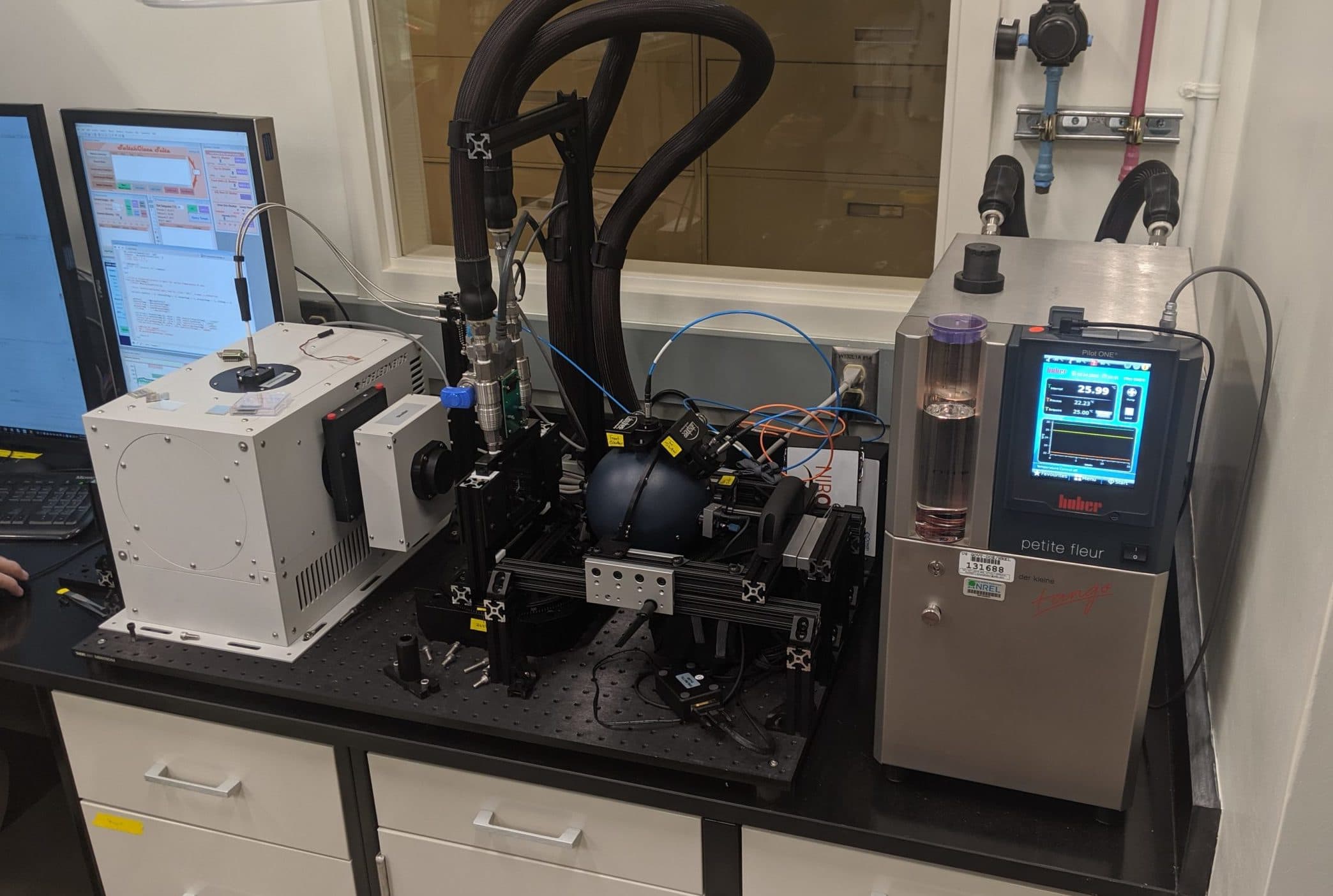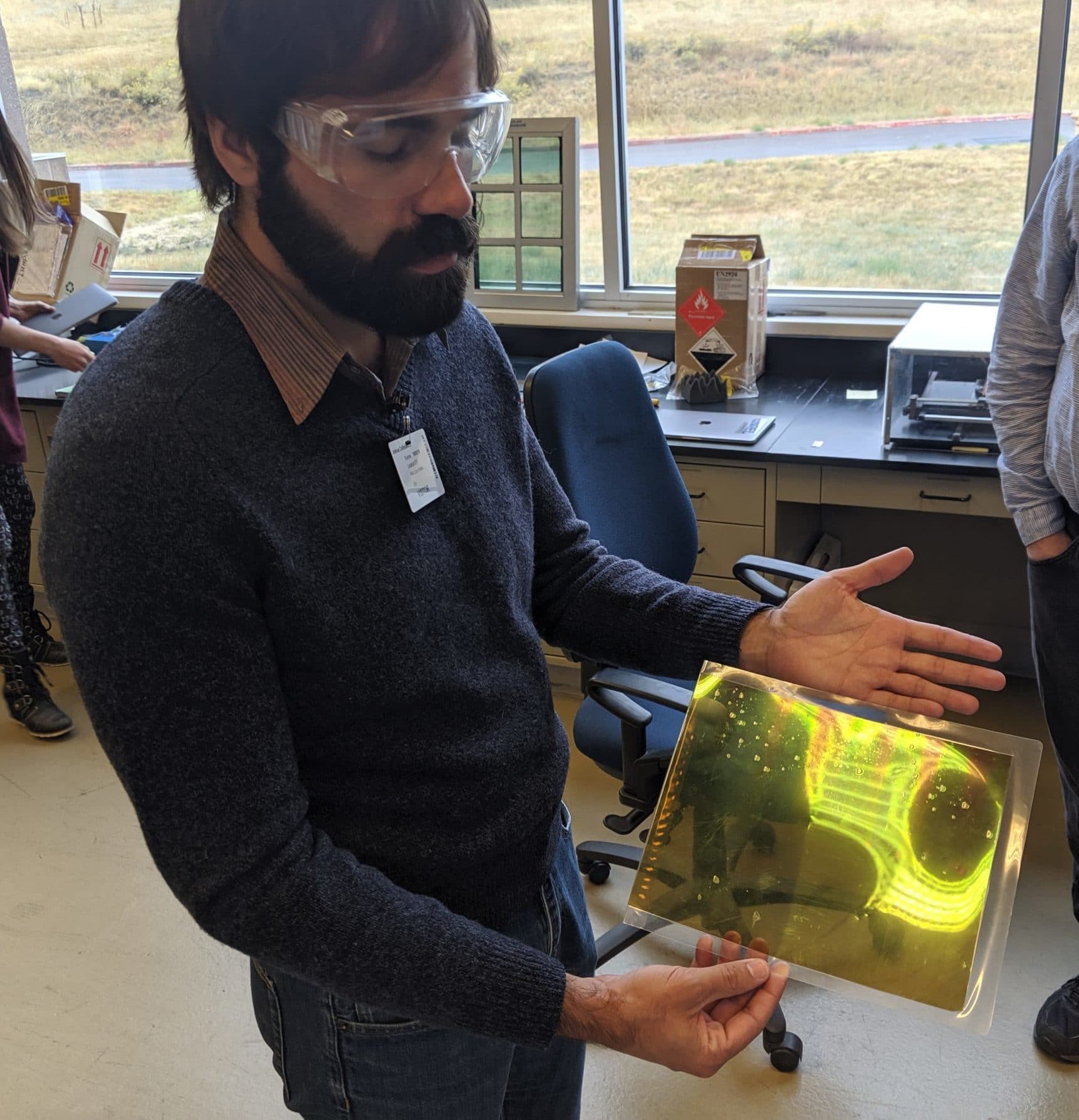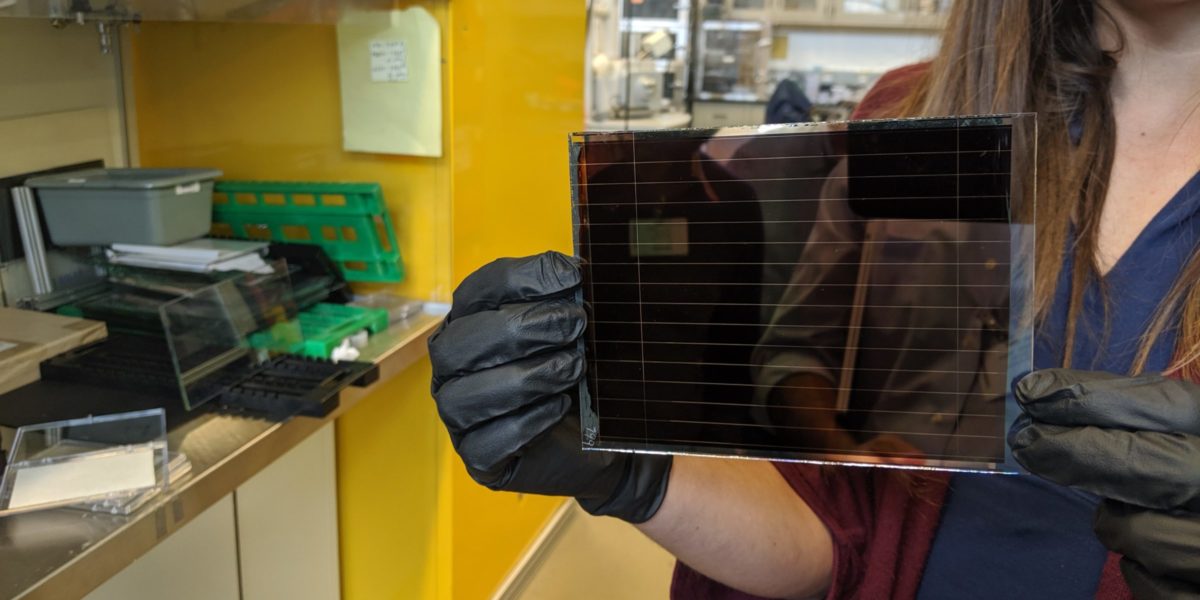Per Wikipedia, “a perovskite is any material with the same type of crystal structure as calcium titanium oxide (CaTiO3), known as the perovskite structure, or XIIA2+VIB4+X2−3 with the oxygen in the edge centers.” There are thousands of perovskites, and they’re among some of the most widely available materials globally.
The application of perovskites for solar power is exciting for several reasons: the material is cheap, the manufacturing process is cheap, the potential for high speed manufacturing is high— and in a very short time, they’ve advanced to very competitive efficiencies. In this famous NREL research cell efficiency chart (.pdf), first note that the Oxford PV and Krict/MIT measurements, just above 26% efficiency, are relative newcomers compared to the storied history of solar efficiency. And then recognize that during this relatively short time, these research cells have already gained the same efficiency levels as the market dominating mono-, multi- and heterojunction silicon products that have been measured since the 1970s and ’80s.
It is understandable why the scientists, developers, and investors are excited. As well, you might understand why this pv magazine USA author was looking forward to visiting one of the earth’s two largest collections of highly experienced and educated solar photovoltaic experts.
In the facilities of Dr. David Moore at the U.S. Department of Energy’s National Renewable Energy Laboratory (NREL), we learned how to make fudge. You boil sugar, butter, milk and chocolate until the sugar breaks down – and then you cool it down real fast. It is nice and smooth because it takes too much energy for the sugar to clump up (crystallize would be the technical terminology) again.
We also learned, that you can make perovskites similarly – except, perovskites have a nature that allows them to reform their crystalline structures. These crystalline structures allow them to perform as a solar cell.
In the above series of images from left to right, we see yellow lead iodide (PbI2) and white methylammonium iodide (MAI). They’re mixed together in a ball mill (similar to a paint shaker at the hardware store), which results in the homogeneous grey powder in the center image – MAMAPbI3. Then you add the grey powder – which is now a perovskite – to an ink (the solvent) which will dissolve the mixture into the pale yellow substance in the right image above.
Then, below, you paint the mixture onto a surface. The ink dries (the chocolate and butter), and the perovskites (sugars) re-form nearly instantly. The product below, when painted on an appropriate material that can capture and move the electrons away, would be very nearly 20% efficient.
In the labs of Dr. Lance Wheeler, work is being done to turn a perceived challenge of perovskites – their instability – into a strength. In this video provided by NREL, we see a perovskite-coated piece of glass reacting to a change in light. The product is made to shift in color to meet the market demand for a better window.
Wheeler notes that a good window lets a lot of light through, but a good solar window absorbs as much light as possible. If you want to hit the 15% efficiency values that pv magazine USA has covered previously, then you need a dark window – and the window would be terrible in the evening, or whenever the sun isn’t shining brightly. Today’s standard solar windows on the market are static, with the manufacturers choosing tint/efficiency in the factories.
NREL has been told by these manufacturers that if we can switch between transparent and dark, then we no longer have that problem of bad-night/non-bright-day windows; we can absorb great electricity during strong sunlight days; and during those strong sunlight days we’re able to save on air conditioning because there will be reduced solar heat gain into the building when the window is tinted.
And just for giggles (and complex testing), Wheeler’s team has invented the below machine to test sunlight coming into solar window products at various angles (the small, white rectangular box towards the left moves around), and to determine the effective efficiency at those angles. This is needed as most solar modules are angle appropriately, and we’ve got extensive data on production – whereas solar windows are installed in buildings whose positioning is generally driven by other variables.

Dr. Joseph Berry says the reason we want perovskite solar power panels to be fast drying is that we want to print these solar panels just like we make news papers – on roll-to-roll printers. A roll-to-roll printer can put ink on paper at up to thousands of feet per minute, and Dr. Berry wants to print perovskites at these high speeds because research has suggested that the world needs 25 TW of new electricity generation capacity – probably up to 4 TW/year when considering upkeep – over the next 30 to 50 years. For perspective, 2019 is expecting roughly 0.125 TW of new solar capacity – and we probably have 0.2 TW of annual manufacturing capacity.
Right around the corner from the Golden, Colorado facilities of NREL – in Winsor, CO – was a facility that Berry casually pointed out had paper printing facilities that could be upgraded to a 2 GW/year solar perovskite facility. As well, of key importance, is that we’ve got experience building enough paper printing machines to meet our solar capacity needs.
During our talk, Berry brought up a different financial model for solar panels and referenced a recently published study which suggested a 20% efficient, 30¢/W solar panel with 10-year lifetime was financially viable. With perovskite solar modules being near 100% recyclable, the price of future perovskite products expected to be an order of magnitude cheaper (3¢/W for modules) than current solar modules, and the lifetimes of the products consistently increasing – there will be developers and customers interested in investing in these new technologies.
Do remember though, the above pricing comparisons involved current silicon products, and projected perovskite products. The incumbent technology has about 97% of the 500 GW of installed solar power in the world, while about 0% is perovskites. And that 500 GW will be greater than 600 GW at the end of this year, with annual global solar pv manufacturing capacity to break 200 GW sometime in the 4th quarter per some projections.
Those who’ve invested heavily in the silicon supply chain will seek to stretch that money as far as it can go, and as a result, silicon based solar prices will continue to fall, and efficiencies will continue to increase. However – a major market change is inevitable and at hand, because of physics doesn’t relent, and silicon alone simply won’t be able to keep up.

The venerated Panasonic heterojunction HIT has long offered a potential solution to the coming single layer silicon efficiency wall – 33.7% at the Shockley–Queisser limit – with its combining of multiple layers. However, Panasonic’s currently offered heterojunction product has an efficiency of 19.7% – and many other products have passed it up. REC Group recently launched its very exciting 21.7% efficiency heterojunction Alpha series. Both of these groups attach an amorphous silicon product atop a standard solar cell.
And maybe it is via this heterojunction path that perovskites trojan horse their way into the hearts of investment firms with hundreds of millions in manufacturing lines. Oxford PV just ordered the first chunk of hardware that seeks to apply a perovskite layer atop a standard solar cell. The company has long had a goal of delivering products to the market by the end of 2020.
This, of course, would just be the first step.
The one theme that was constant between all researchers, is they they’re looking for a path to production. Dr. Moore’s research was the most fundamental to allowing those later in the process to deploy. Dr. Wheeler sought insight in window upgrades and deployment in the real world, due to the generally slow replacement pace of our hundreds of millions of structures across the United States. And Dr. Berry talked of relationships with at least six commercial groups – spending money today – developing techniques to deploy fast printing perovskites.
Someone pretty smart recently said that getting a new technology to global deployment levels is like birthing a child, and that it takes 20 to 25 years until it reaches adulthood. So, maybe it’ll be longer until the product dominates – but Oxford is building machines today, Saule Technology is deploying today, and the NREL folks think products will be in the wild in two years.
Pictures, or it didn’t happen:

This content is protected by copyright and may not be reused. If you want to cooperate with us and would like to reuse some of our content, please contact: editors@pv-magazine.com.















“Dr. Joseph Berry says the reason we want perovskite solar power panels to be fast drying is that we want to print these solar panels just like we make news papers – on roll-to-roll printers.”
Could this not create the tandem high efficiency solar cell? Using bifacial solar PV panel manufacturing techniques, wouldn’t it be relatively easy to spray on a coating of a particular perovskite on the back side of a bifacial panel and another perovskite ‘tuned’ to a different band of the spectrum, (albedo) to get solar harvest up in the 30% plus range.